Nestled in the heart of Somerset’s mystical landscape lies Glastonbury Tor, a site shrouded in ancient mythology and natural beauty that has captured imaginations for centuries. With its striking terraced hill and iconic St. Michael’s Tower standing 521 feet tall, it’s no wonder this legendary landmark beckons over 250,000 questing pilgrims each year.
Visitors seeking magic and legend will not be disappointed – Glastonbury Tor boasts connections to Joseph of Arimathea, the Holy Grail, and even King Arthur himself. Yet history and archaeology reveal so much more if you look deeper, with evidence of settlement dating back at least 6,000 years.
Beyond the myths, the Tor provides breathtaking views and an opportunity for peaceful reflection whether you scale the iconic landmark or admire it from afar. Let’s uncover why so many feel drawn to Glastonbury and its crowning sacred hill.
Table of Contents
Arriving at Glastonbury Tor
Situated in Somerset six miles south of Wells, the iconic hill sits just outside Glastonbury town, known as the ancient Avalon. Several routes lead to the base of the Tor:
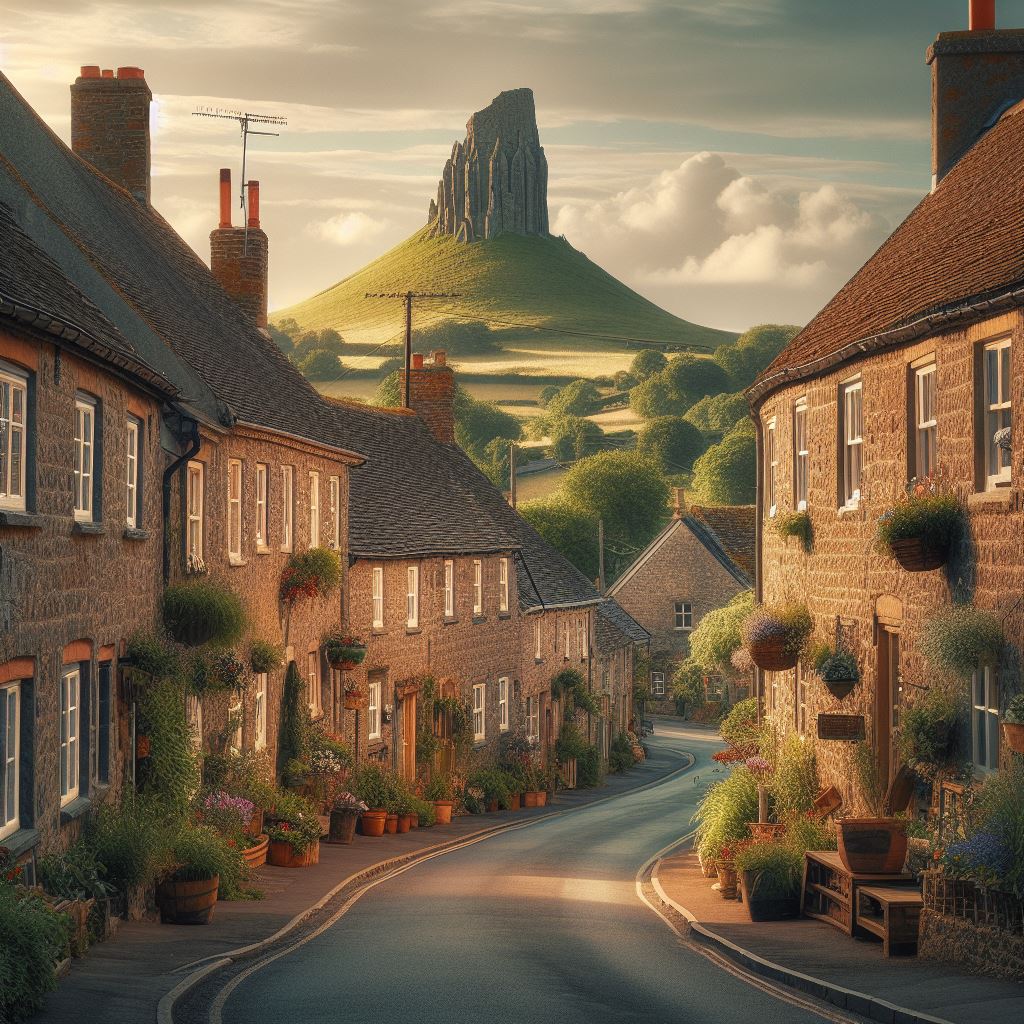
- From the west, the A361 heads straight to Glastonbury. Leave plenty of time to walk the Tor and explore the town.
- The 95 and 376 buses from Wells drop off in the town center just 2.2 miles west of the Tor. Consider the scenic Tor Shuttle from town on select days.
- Limited parking is available at the base of the Tor, but public transport or walking from town is recommended during peak season when over 250,000 visitors descend upon the small locale.
Accommodation clusters around Glastonbury town including B&Bs, hotels, and campgrounds. Choose Glastonbury for its thriving spiritual sites or stay nearby in Wells, Street, Shepton Mallet, or Castle Cary to avoid festival crowds if solitude calls you.
Origins of the Myths and Legends of Glastonbury
Since ancient times, mythic tales have intertwined with Glastonbury’s history. Their origins link to lost Celtic lore and early Christian cross-pollination. Themes and key myths include:
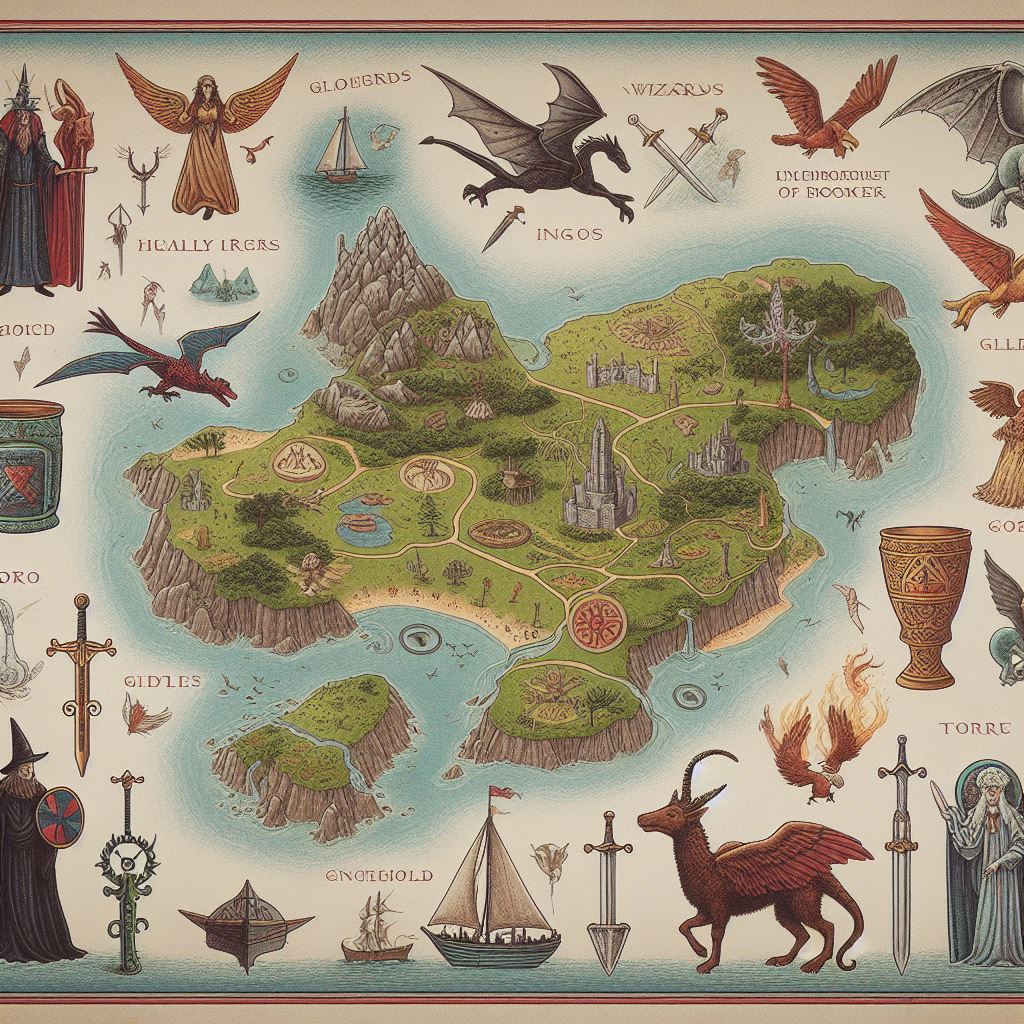
- Avalon – The Tor resonates as a gateway to Annwn or Avalon, a mythical underworld and island of apples in Celtic lore later conflated with stories of Arthur’s death.
- The Holy Grail and Joseph’s Biblical Arrival – Stories link the Tor to Joseph, suggesting he arrived in 45CE bearing vials from Jesus’ crucifixion later transformed into the Holy Grail legend. Speculation connects him to Britain’s first church on the grounds.
- Arthur and Guinevere’s Eternal Slumber – In 1191 monks claimed to have discovered Arthur and Guinevere’s tomb at Glastonbury Abbey, lending Arthurian allure. Legends say Arthur still quests for the Grail atop the Tor.
- The Once and Future King – Myths proclaim Arthur the immortal ruler who will one day return again to Glastonbury, continuing early Celtic legends later incorporated into medieval literature.
The Tor’s universality comes not just from the awe of the landscape itself but its ability to bridge prehistory to known history to the very edge of myth. The layers reveal an ongoing and early sacredness associated with the site.
History and Archaeology of Glastonbury Tor
Thanks to the rigor of historians and archaeologists, abundant records substantiate early habitation and activity echoing the lore. Signs of settlement exist from at least 3500 BCE with traces of an ancient community at the base and structures atop the hill:
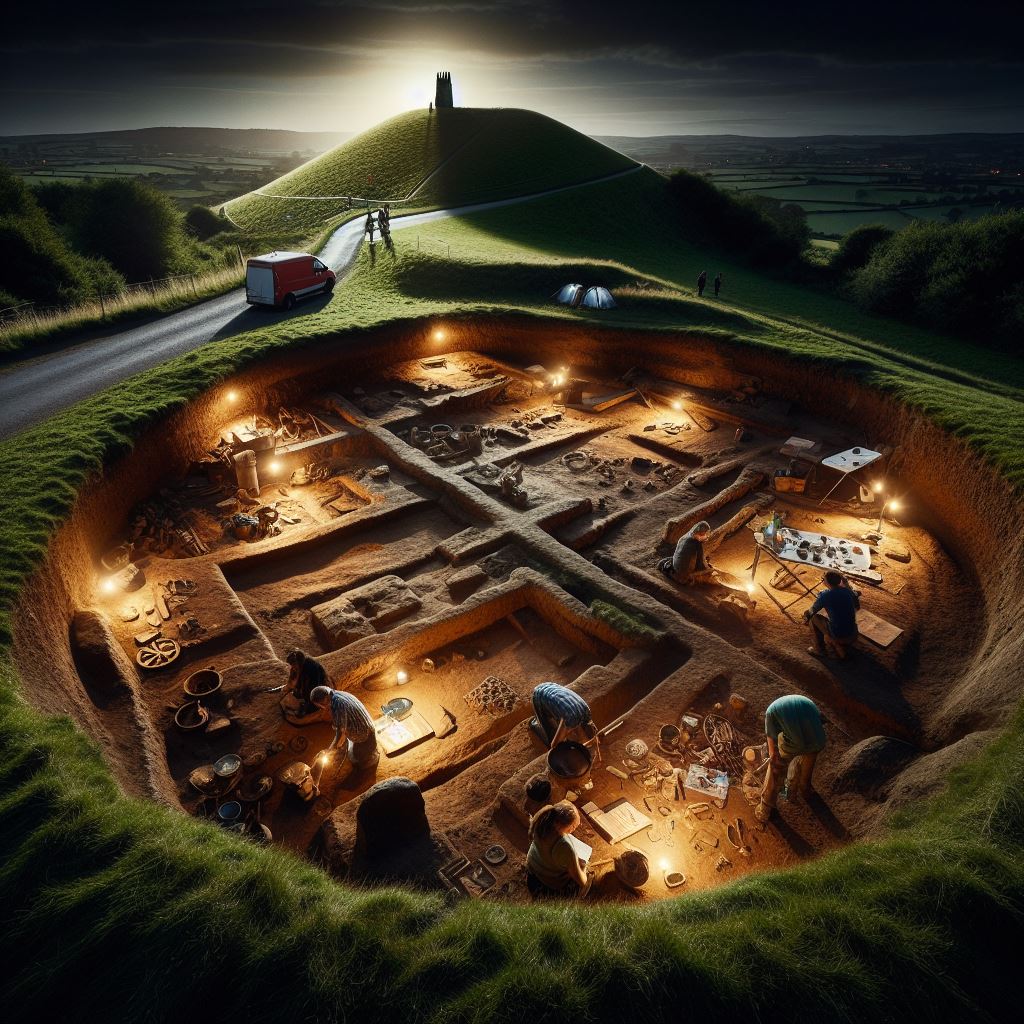
- Lake Village Site – Excavations in the marshes by the base reveal a thriving village community over 5,000 years old that venerated the Tor. Considered Britain’s oldest lake village, the society occupied the area for 1,500 years.
- Multiple Hill Forts – Starting from at least the Bronze Age around 1,500 BCE, a series of summit forts were constructed during different eras. Living quarters likely existed within the Iron Age era fort around 300 BCE responsible for the distinct terracing still visible.
- Hermit Caves – Monks and hermits carved out cave dwellings starting in the 5th century CE seeking spiritual solitude. Some erosion channels naturally formed, later occupied by the pious.
- St. Michael’s Church – Current remains date to the 12th century when the site became a prominent pilgrimage destination, but settlement existed since at least the 700s CE. The church likely served as a beacon for seafaring pilgrims.
Evidence shows activity centered on sacred purpose rather than military fortification or control, with the exception of the Iron Age era. The spiritual significance of the Tor spans over 5,000 years.
Timeline Overview
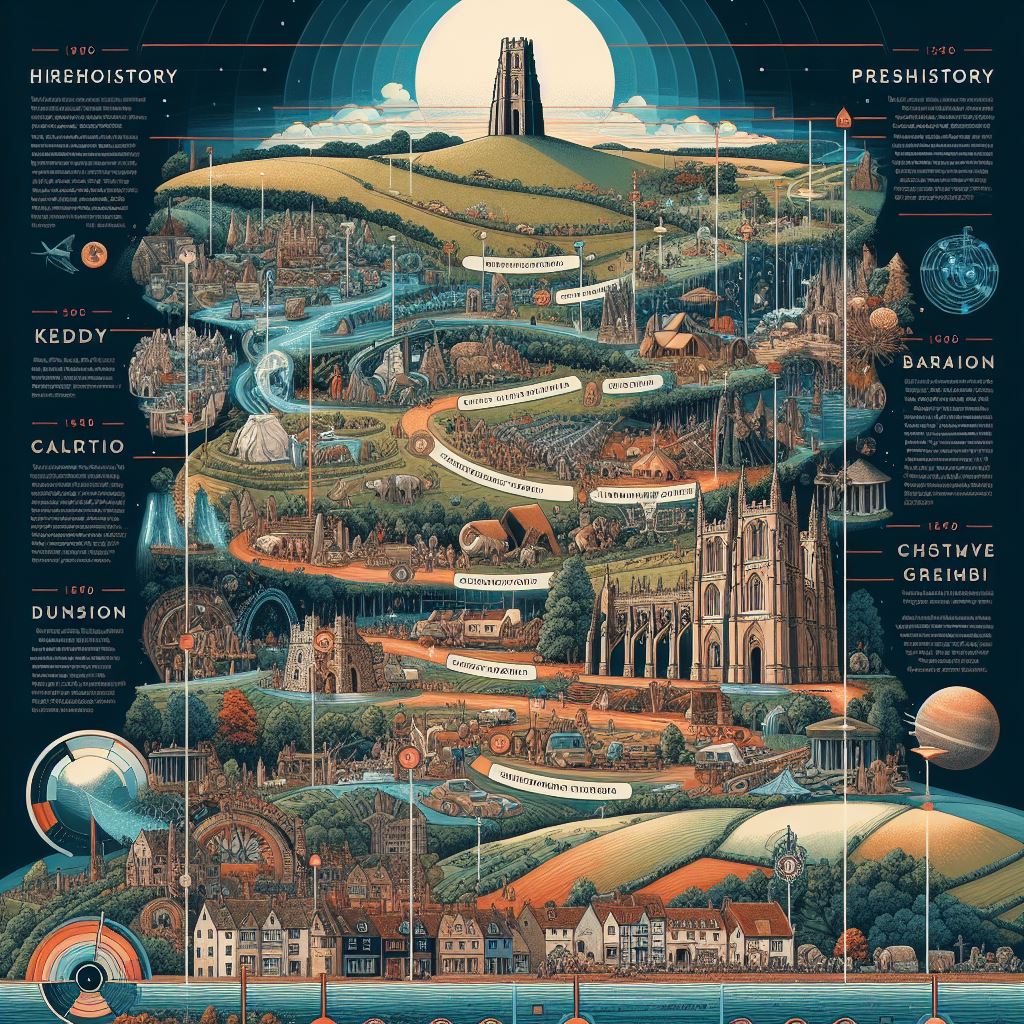
| Year | Major Event | Additional Details |
|---|---|---|
| 3500 BCE | Lake village settlement thriving at Tor base | Lasted approximately 1,500 years |
| 1500 BCE | Bronze Age hill fort established | Lake Village continues to occupy marshes and venerate hill |
| 1000 BCE | Lake village continues to occupy marshes and venerate hill | Abundant wooden causeways connect village sites |
| 300 BCE | Iron Age fort and terracing constructed | Sign of intentional excavation and habitation |
| 45 CE | Legends date Joseph of Arimathea’s arrival | Basis of Holy Grail myths |
| 300 CE | Hermits carve cave dwellings on Tor slopes | Seeking spiritual solace on the hill |
| 700s CE | St. Michael’s Church founded on site | Served as waypoint for seafaring pilgrims |
| 1100s CE | Stone church structure from site used nearby | Local rhyme commemorates the actions |
| 1300s CE | Major earthquake significantly alters landscape | Modern shape created along with tower remnants |
Geology Explaining the Mystical Landscape
Beyond human activity, geological events through the ages further cultivated the visual spectacle and tranquil surroundings that enhance the Tor’s notoriety. Distinctive features arise from unique factors:

- Terraced Slopes and Paths – While modern legend attributes the concentric ridges to tightened sheep paths, in reality, the walkways follow the Tor’s contour lines revealing its stack of concave-outward basins. This distinct shape channels water downward carving rainbow-shaped arches traced by walkers today.
- Conical Hill – The Tor rises as a volcanic plug of hardened magma poking through softer, eroded rock layers surrounding it. paired with Iron Age excavations this created the iconic smooth conical shape quite visible for miles.
- The Tor’s Cap – The very top of the Tor reveals a distortion in the smoothly flowing layers, indicating past seismic activity. In the 14th century, massive earthquakes hit altering the shape and destroying prior structures. St. Michael’s Tower was erected afterwards but still eventually ruined over time.
While human activity forms the basis of myth and history here, natural forces sculpted the Avalonian atmosphere that casts its spell of tranquility.
Climbing Glastonbury Tor
While appearing imposing to the onlooker, reaching St. Michael’s Tower only requires a steady 30-minute climb up the smoothly rippled sides. Some tips for the ascent include:

- Sturdy shoes or Wellington boots prove best on some slippery slopes
- Light layers advised for temperature drops plus wind at higher elevation
- Choose clear weather days for ideal climbing and views
- Allot extra time to pause and appreciate the shifting vistas
- Take care in gusty conditions or descending wet slopes
Conquering the climb offers rewards through an accessible experience for all but the most limited mobility. Young children may need some assistance navigating inclines but otherwise, the Tor suits most ages for a meditative stroll. Benches allow moments to drink in views featuring:
- Sunsets casting dazzling light shows on ridge contours
- Blanket views of the Somerset Levels patchworking the landscape
- Glastonbury and iconic Abbey ruins peeking through the valley
- Watch natural light and conditions transform scenes hourly
- Marvel sheep and iconic ponies wandering freely as you pause to feel present among the tall grasses
The Tor’s majesty endures as a focal point anchoring you in the moment. Each glance outward and within further roots your place in its storied history.
Historical Significance of the Tower at the Top
Crowning the apex of Glastonbury Tor one finds the worn and partially collapsed St. Michael’s Tower, the last visage hinting at millennia of sacred ritual enacted here. As the sole upstanding structure, it represents continuity and resilience despite turbulence through the ages.
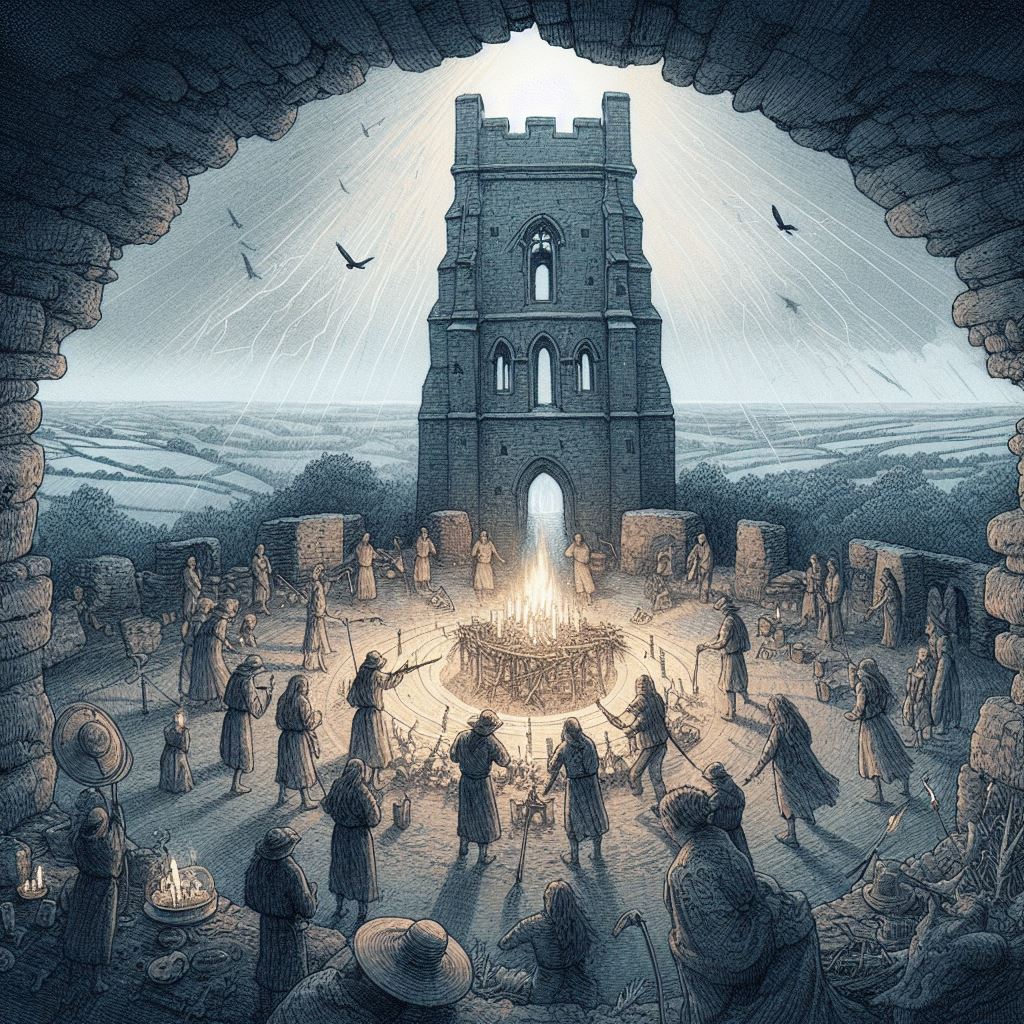
While originating in the 14th century amidst earthquake destruction, records indicate ritual use since at least the 7th century CE based on ruins nearby. Its purpose remains ambiguous – various theories suggest pagan uses, early church sites, hermitages, or mythic ceremonial portals.
Today we can only speculate on past Tower intentions. Yet when gazing from its panoramic windows, history, and myth seem to braid together – the perfect perch to link quests for meaning across shifting sands of time.
More to Explore in the Glastonbury Area
The wealth of history and myth layered throughout the Tor could occupy days for enthusiasts and skeptics alike. Beyond the main hill, plenty of nearby activities immerse you deeper into lore. Attractions in Glastonbury town and surrounds beckon including:

- Glastonbury Abbey – Majestic sprawling ruins still conjure early medieval grandeur with traces of the abbey kitchens and monk sleeping quarters
- The Chalice Well & Gardens – Known as the Red Spring or Blood Spring, these tranquil gardens surround an iron-red water well invoking visions of the Holy Grail
- White Spring – An underground temple by the Tor base offers candlelit bathing pools and chambers evoking ancient pagan rites
- Lake Village Museum – Find interactive displays showcasing artifacts from tribes who built wooden foundations in the 5,000-year-old marshes
- The Somerset Rural Life Museum – Step back in time exploring recreated shops and village buildings depicting 19th-century living
- Goddess Hall & Shrine – Connect with Glastonbury’s feminist spirit through workshops, readings, or attending a handfasting ceremony
Linking lore, archaeology, and natural wonder, Glastonbury Tor continues to fascinate. Perhaps it is the landscape’s unique magnetism bringing together diverse eras and individuals in a common purpose – the discovery of deeper meaning itself. Here, history refuses to rest. Myth or reality, Tor’s enduring enigma grounds experiences in an overarching story where matter and spirit merge out of time.
What secrets or quests might it reveal to you?

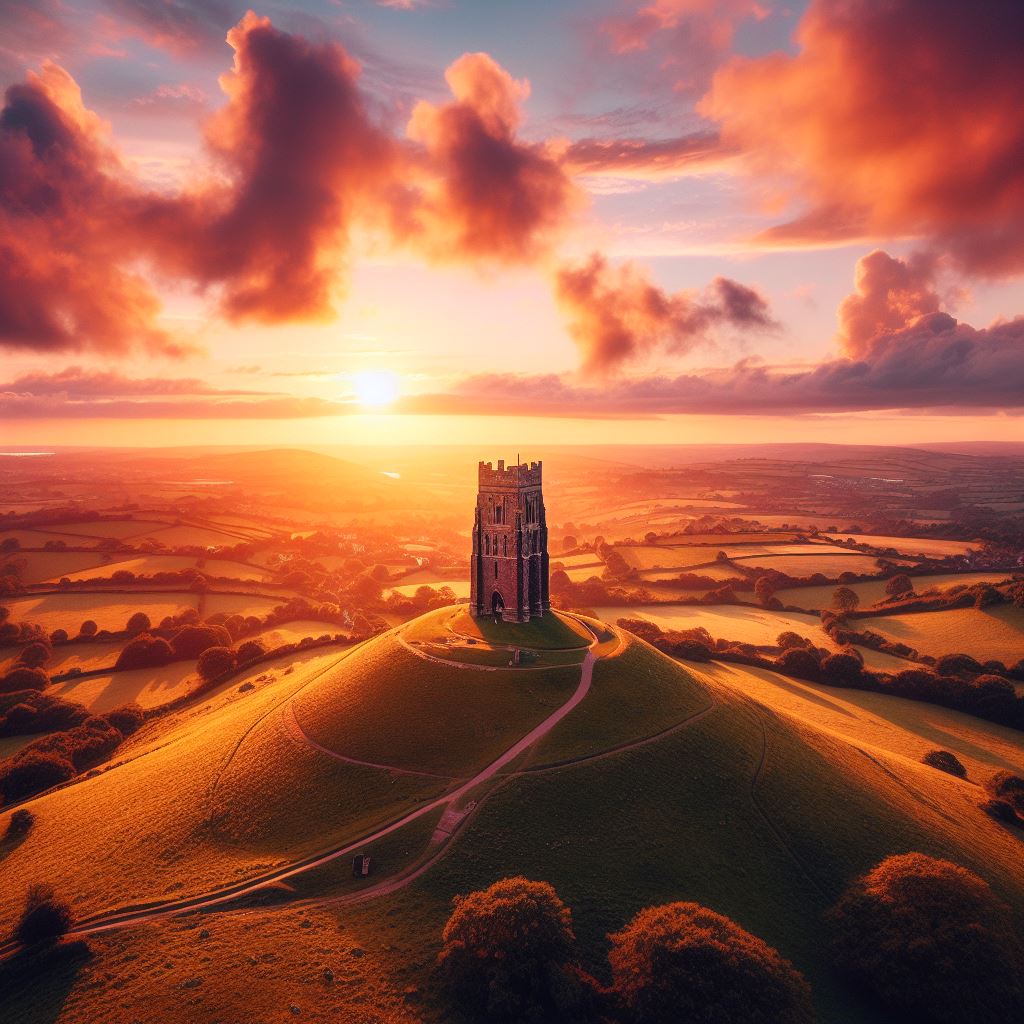
Leave a Reply